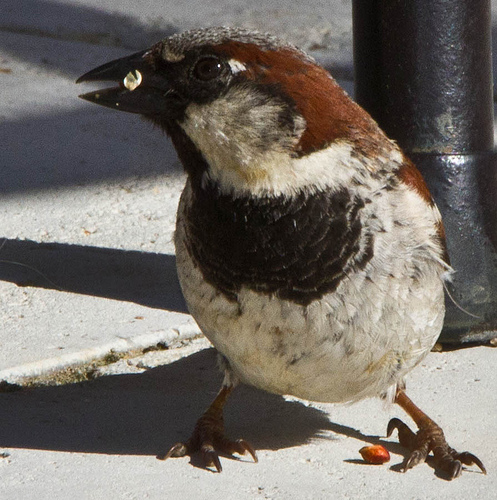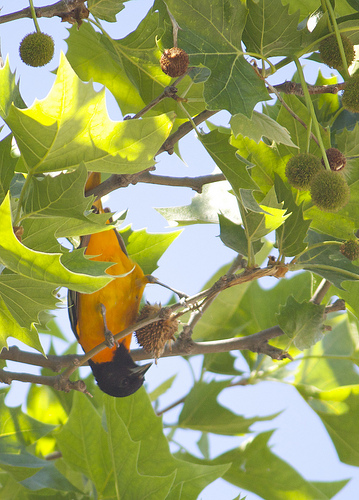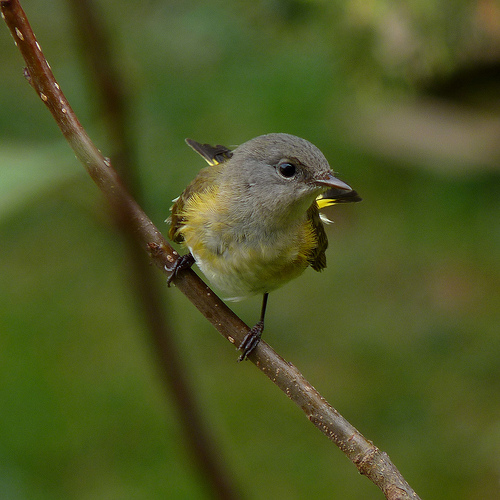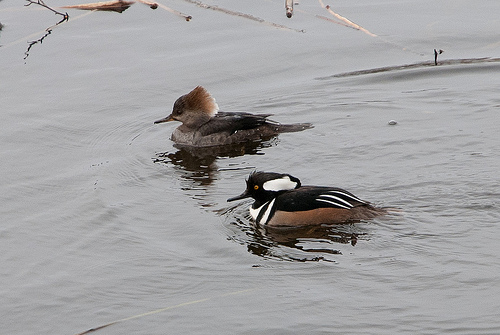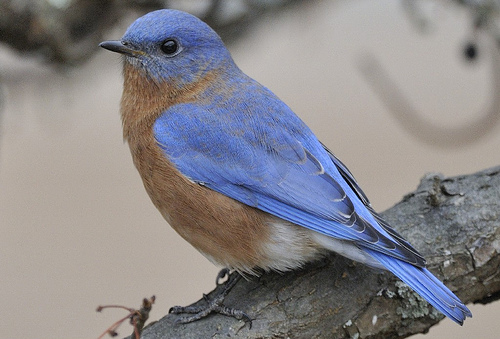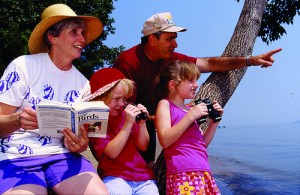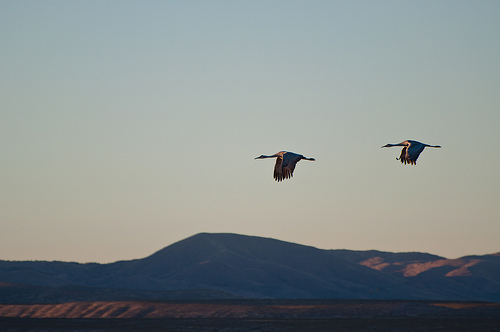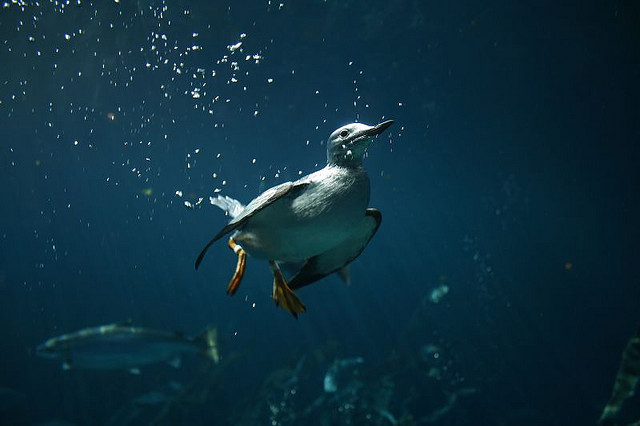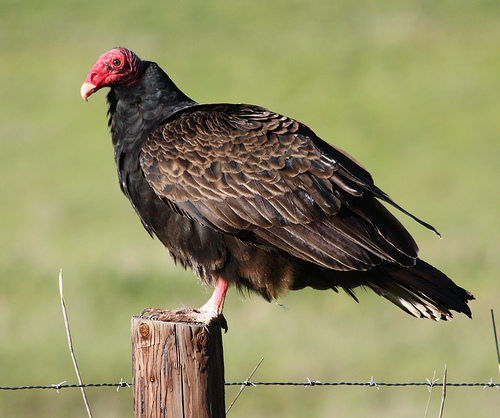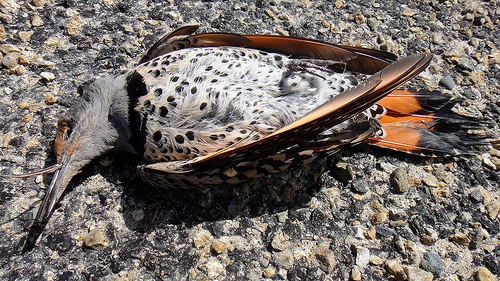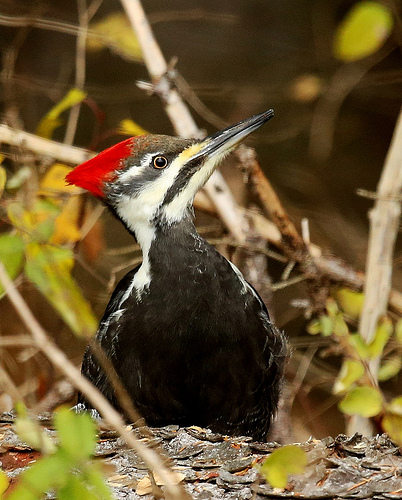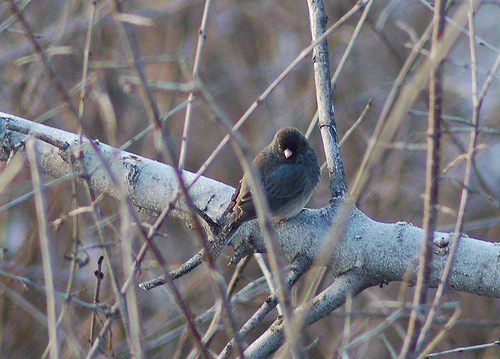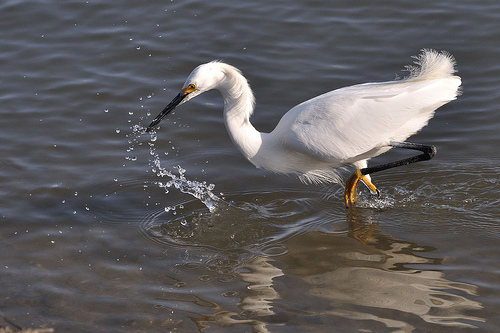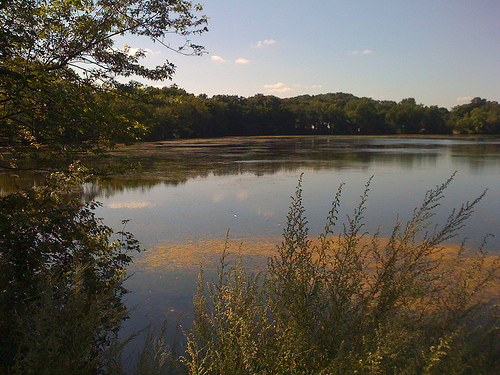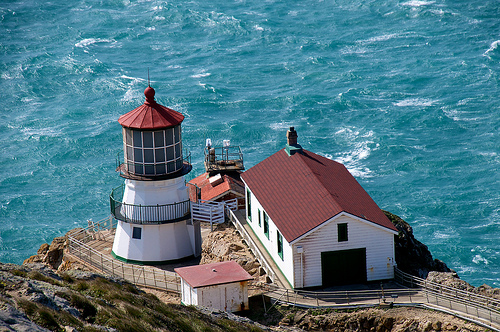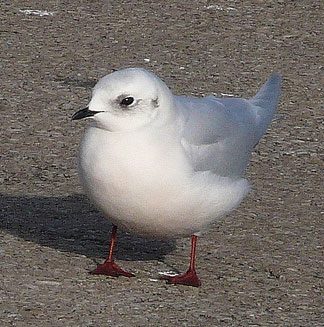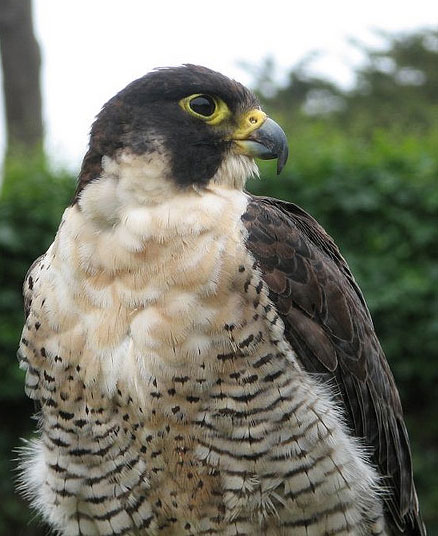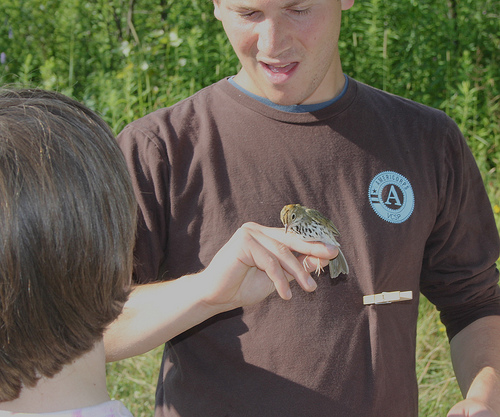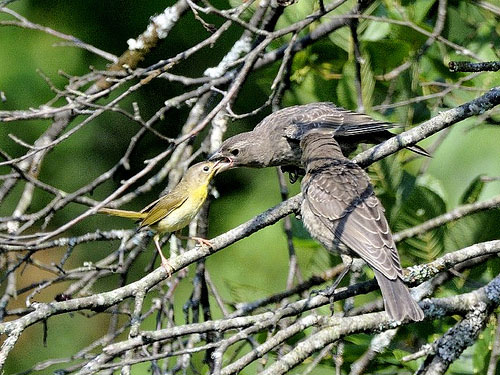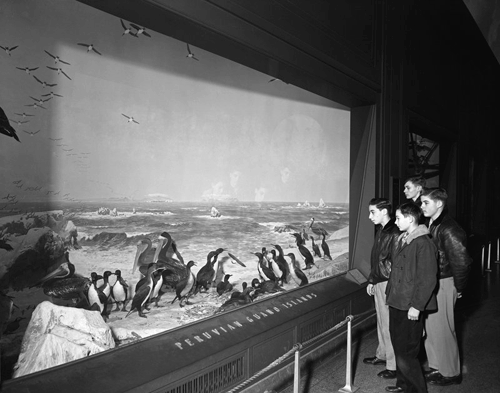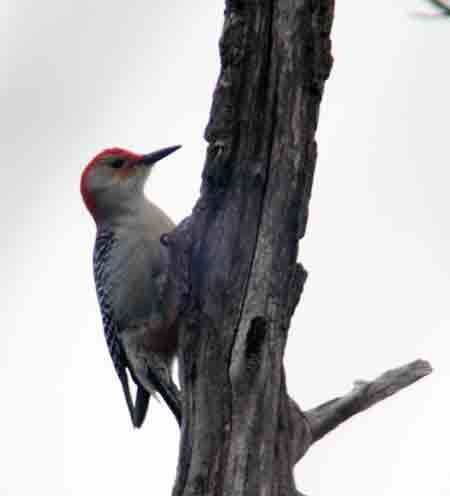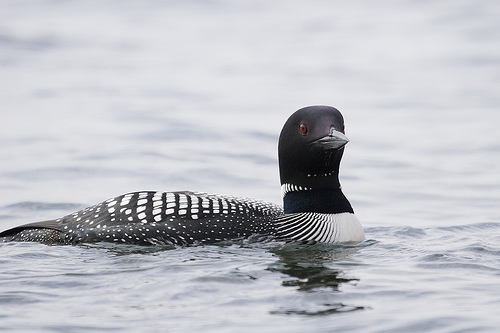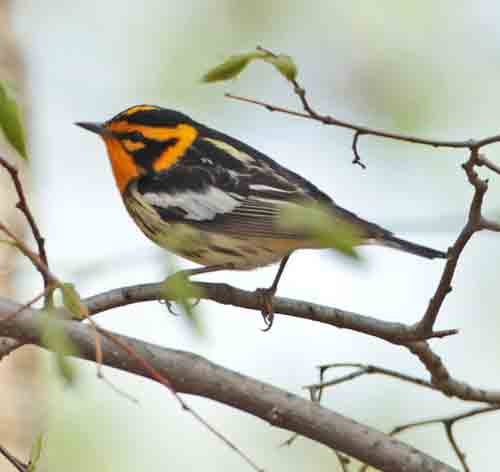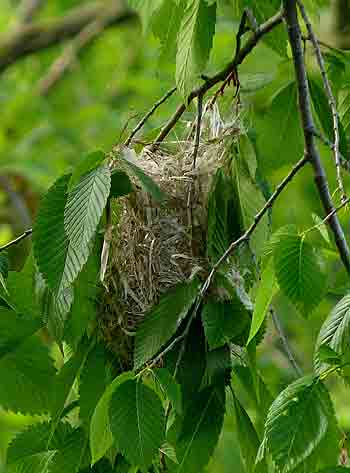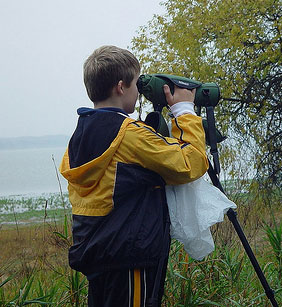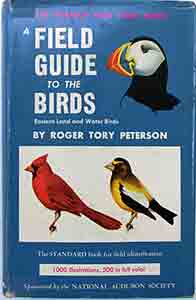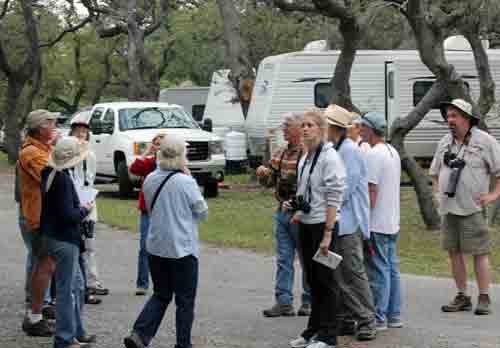House Sparrows sparked Suzanne’s interest in birding:
This year is the first time since I moved to Wilmington, 23 years, that I have had a flock of House Sparrows at my feeders. When I walk out of the house and hear the group singing I feel a little melancholy and memories, some good, some bad come back. I was thinking about this very subject a few weeks ago when they showed up. A sign maybe I thought? Has my life come full circle?
On Chatham St. in Lynn where I grew up , there wasn’t any birds singing but House Sparrows. They use to sing in the bushes under my window next to the caterers. I was a wicked tom boy, always dirty, loved being outside, and played various sports with my brothers and their friends. I would often get distracted by the House Sparrows, and of course my brother Billy would tease me.
“So the next time one might think to “hate” those House Sparrows, try to remember that they might just give a spark to a poor city kid where no other birds besides pigeons reside.” photo by Pets4Dawn
We lived in a decrepit house, surrounded by commercial development on a small lot with a mostly dirt backyard. For a not so “normal” poor kid in the city who loved nature, House Sparrows to me were hard not to notice with their loud explosive song and their obsession with dirt baths. I use to love to check out the depressions and wing marks they left in the dirt. They were so cute the way they fluffed their feathers, hopped around. Sometimes I would feel badly because our run-down (a.k.a. pickle) game would keep them away. I eventually set up a bird bath with a pie plate and a bleach bottle filled with water with a small hole so the water would drip out slowly. I hung it in the one of the only trees in the yard. They loved it! And I loved that they loved it.
My beloved mother fostered my interest in birds. She took me places like Plum Island, Ipswich River Sanctuary, and worked a community garden at Danvers State Hospital. Santa left me field guides which I would look at and dream about seeing birds like Bald Eagles, and Scarlet Tanagers. I was obsessed with animals and birds. I had a tricycle I pretended was Black Beauty, strange huh? Lassie, Tarzan, and the Mutual of Omaha Wild Kingdom were my favorite TV shows (Did I just date myself? ). When I got older I wrote my reports on Life Sciences, Ornithology, and Jane Goodall, one of my heroes. I knew I was very different from any of the other kids. I started a life list and started adding on birds I use to dream about seeing, but never told my friends.
Then I became a teenager. I hated bullies. I felt had to “toughen up” if I were to survive. I got away from birds and nature. The angry at the world teenager doesn’t bird watch, they work on attitude and smoke cigarettes. When I decide to do something I try to be good at it, I found being tough was easy, but didn’t make me happy. There is a whole lot of chapters in between but I survived and grew up. I never turned into a Jane Goodall but I did make it to Alaska to study Bald Eagles with the School for Field Studies. I was asked to come back as an intern but decided to have a family instead. My tough thick skinned training came in handy working on controversial environmental issues so I wouldn’t change anything. The kids are older and I have found my way back again to where I belong. It took me almost a life time and why I enjoy and appreciate every minute of being out there. So the next time one might think to “hate” those House Sparrows, try to remember that they might just give a spark to a poor city kid where no other birds besides pigeons reside. And remember, there aren’t too many House Sparrows, there are too many people.
An upside-down Baltimore Oriole sparked Warren’s love of birding:
I was very fortunate to grow up in a small town (West Newbury) where the woods, fields, and wetlands were pretty much out my back and/or front door. I also have a father that has interests in astronomy, geology, and ornithology. (He is now 88, and still in the same house) He would take me on mini birding trips on the dirt roads in town when I was about 7 or 8 years old in the mid 1960’s. The “spark” came one day in the backyard when he had his home made telescope out and set up to look at the moon one day and got on a Baltimore Oriole that was nesting in our long-gone American Elm. I was floored, and hooked. It was also when I realized that astronomy telescopes portray the image upside down, so the Oriole flew up into a nest that defied gravity!
A Baltimore Oriole, seen inverted in a telescope, was Warren’s spark. photo by davedehetre
The next spark was when my folks bought me the rather large, double-volume National Geographic bird books. Some of you might remember this set. I had bendable plastic records in the back of the book that could be folded, like a book, and played on a record player (remember those?) Well, all this did was expand my knowledge of what birds were out there since the books covered the entire US, and not just the east. I wanted to see them all.
Soon I was leaving my poor dad in the dust, and he was dropping me off at the Plum Island airport at 12 years old to meet the Brookline Bird Club and I’d spend the day with them birding the area.
This is when I met a young teacher from Haverhill, who would pick me up at the end of my street frequently, and bring me home when my dad wasn’t available. His name was Bill Drummond. Thanks for the rides Bill!
My birding might have taken a back seat for awhile to sports, cars, and girlfriends, but it never left me. Now I enjoy it more then ever-it’s my stress relief and anti-drug! I’m thankful for it.
Warblers galore at Hellcat sparked Marjorie:
Although I grew up in CT, all of my siblings and I were born in Maine and we spent every summer and major holidays at my grandparents farm in Lincolnville, Maine. My grandparents always fed the birds and I remember the flocks of Evenings Grosbeaks and Blue Jays, seeing the Great Blue Heron spearing minnows at the farm pond, watching the Bobolinks in the field, listening to the haunting call of the Common Loons when we stayed at Winnie’s camp on Levenselar Pond. My Dad often took us for long walks in the woods or trout fishing, affording us looks at new birds and other wildlife like beaver, muskrats and mink. My first bird field guide was a birthday gift from my older sister in 1969 – Peterson’s 2nd edition “A Field Guide to the Birds”. I started keeping a small life list in that book. While the spark was always there, birdwatching was something I did once in a while. When I married, we had our own bird feeders and I would go birding with my sister Annie at Plum Island from time to time when she visited Massachusetts.
I would say the flame was really lit in May 1996 when I birded with Annie at Hellcat on Plum Island. There was a warbler fall out that beautiful spring day. The warblers were at eye level, and seemed to be everywhere, landing in front of us and even sitting on the Hellcat board walk itself. Warblers up close was new to me and I kept saying – what kind is that? how about that one?, so anxious to see each one and try to figure out its name. I was definitely hooked and wanted more.
Warblers on Plum Island were Marjorie’s spark birds. photo by Dendroica cerulean
I started participating in some of the Bird Watchers Supply & Gift bird walks, led by Steve Grinley. I joined the Brookline Bird Club and often went on local trips led by Bill Drummond and many others. I took the North Shore Ornithology course taught by Steve Haydock. While I still consider myself a mediocre birder compared to so many more experienced birders I have met, it is the knowledge of those people that has helped me to grow and learn. I would like to thank everyone who has pointed out a bird to me, shared their scope with me, helped me to learn a new bird song, etc. I have so much more to learn and see and I look forward to what new adventure awaits me every time I go out birding. Its like a treasure hunt – you never know what you will find!
While my own children, now age 24 and 27 are not birders yet – they do notice the birds and often describe some bird that they have seen. Their spark is still hiding within – but I have hope that their flame will someday be lit as well. In the meantime, I am lucky to share the birding passion with my four siblings, Annie, Lee, Margaret & Janet. We get together as much as possible to go birding. I am the only one in Massachusetts, 2 live in Maine and my brother is in Indiana. While most of our bird trips are informal get togethers, occasionally we have gone on organized bird trips together. All five of us went together to Colorado for the Grouse Grand Slam with Bill Drummond, we went to Baxter State Park with Bob Duchesne and we look forward to a trip to Texas soon. My mom, now 86 years old, still lives at her parents farm in Lincolnville and she is still feeding the birds. I only wish my Dad were still here to go with all of us on a birding trip. He would have been pleased to know how much his walks in the woods meant.
Remember, to share your passion with others, share your scope with a non-birder who asks what are you looking at – you never know when YOU will be the spark that started the passion for someone else.
Hooded Mergansers sparked Bruce’s birding into high gear:
I’ve been enchanted and moved by all things natural since my childhood summers with my family in Rocky Mountain National Park. I remember especially loving the hummingbirds at my grandparent’s feeders.
When I spent several years traveling around Latin America during time off from college, I always had a compact pair of binoculars with me. When I met my wife Mary, we discovered we both liked birds. We had both taken an ornithology class in college. When we took the kids on two extended tours of the western US in rented RVs, we decided we needed two pairs of binoculars so we wouldn’t have to keep fighting over them, and we even bought a field guide. When my daughter was eight years old, she and I spent many dark winter evenings wandering through the woods behind our home trying to get a look at the Great Horned Owl who’s call was enchanting us so, and that was waking my wife and I at 5 AM from its roost outside our bedroom window. Whenever we saw an unusual bird, or the time we watched a raptor in our backyard eating its bloody prey during a snowstorm out our back window, we’d pull out our field guide and leaf through, trying to figure out what is that bird anyway (rarely successfully – we had no notion of field marks).
After the kids left we downsized to a home on Pelham Island Road in Sudbury and started noticing people wandering around our neighborhood looking at birds. On January 15, 2009, I was crossing the Sudbury River on my way to work and spotted some unusual looking ducks. I happened to have binoculars in the car, so I stopped to take a look. I was shocked, dumbfounded by their beauty. I called my wife at work to tell her about them, and spent the morning at my office on the Internet trying to identify them, before finally deciding they must be Hooded Mergansers. I couldn’t think of much else all day.
Hoodies continue to captivate Bruce. photo by quinet
That evening Mary and I decided: OK, we have got to start learning what these birds are. We went on-line and started signing up for outings and classes at Drumlin Farm. Four years later, after about 70 Mass Audubon group outings, birding trips to Texas, Oklahoma, Maine, NH, and Pennsylvania, taking the Birder’s Certificate Program at Joppa Flats, and countless hours birding by myself or with my wife, with a new and wonderful shared joy in our marriage and dozens of new friends who share our new passion, I have dozens of standout bird memories – a solitary Wood Thrush calling in the darkening evening in Griscom Woods down the road from our house, the Eared Grebe in full breeding glory 10 feet away in the dawn mist in Oklahoma, hundreds of White Pelicans circling high and silently in the bright sun, or watching Torrent Ducks plunging and bobbing as we ate breakfast by a roaring river in Peru. I’ve learned there is not one, not two, but dozens of kind of ducks. And of course I’ve seen hundreds and hundreds of Hooded Mergansers. But they still take my breath away every time. Last weekend, after a delightful day on the south shore and cape with Strickland Wheelock and friends, 63 species for the day and adding Northern Lapwing and Little Egret to my life list (numbers 474 and 475), the most memorable moment was the single Hooded Merganser filling my scope at Marston Millpond.
Initial Post Responses: Part 1 Part 2 Part 3 Part 4 Part 5 Part 6 Part 7 Part 8 Part 9
Join those who comment on what spark set them on their birding journey? Tell us about it with a comment below. You should sign up by RSS feed or via email to have future “spark” articles sent to you. Thanks

